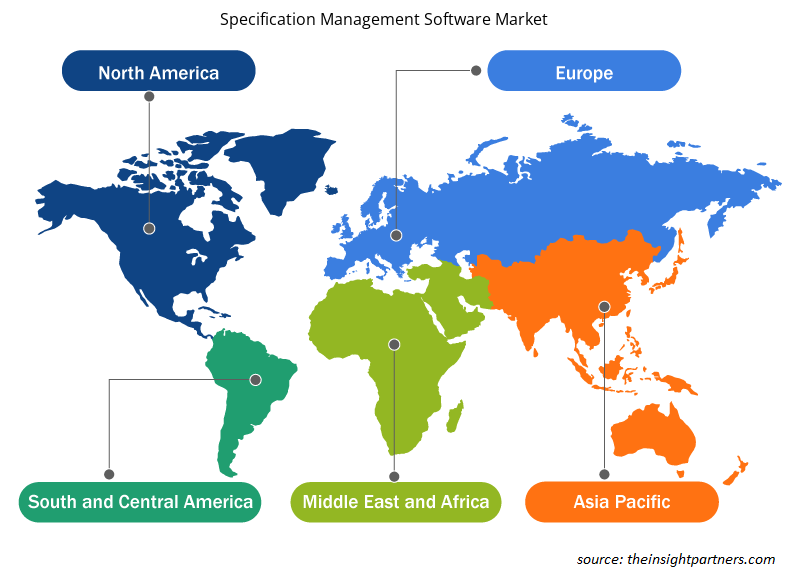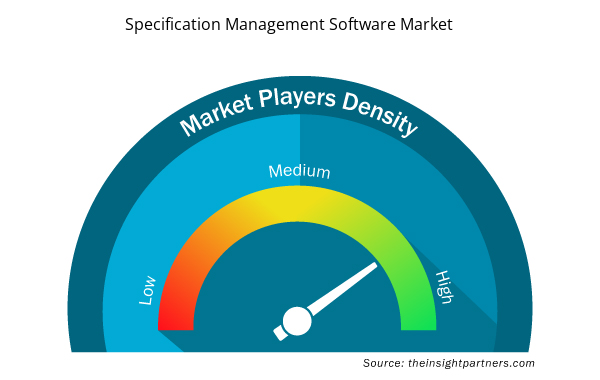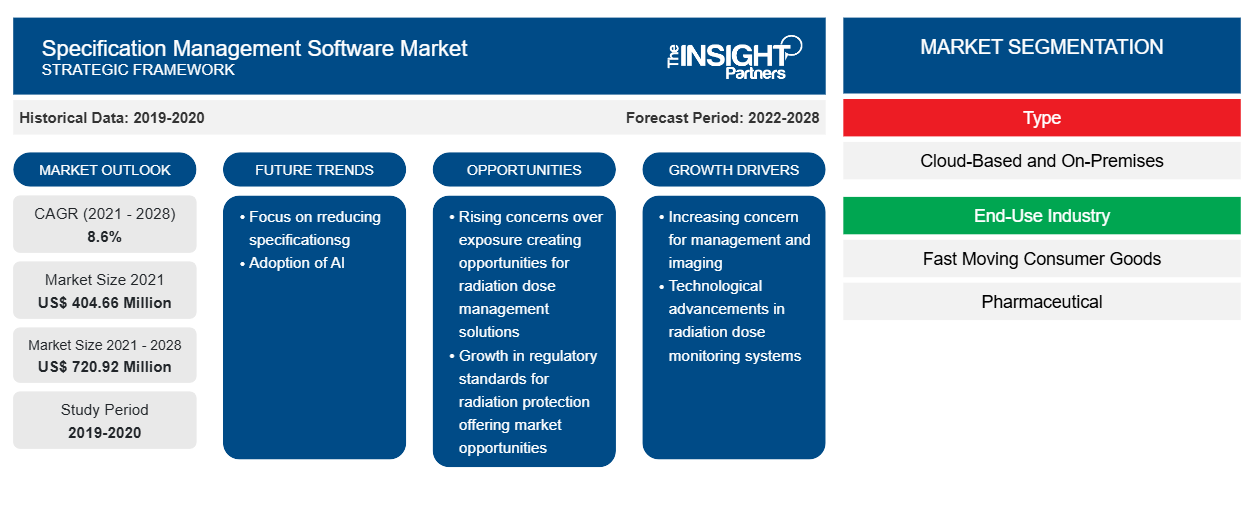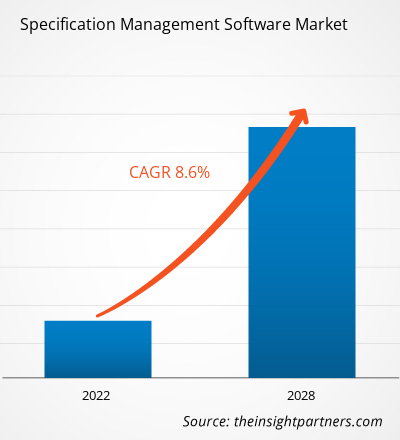规范管理软件市场预计将从 2021 年的 4.0466 亿美元增长到 2028 年的 7.2092 亿美元;预计2021-2028 年期间的复合年增长率为 8.6%。
药品是通过组合不同类型的化学物质或生物物质而制成的。制造过程涉及一系列单元操作,包括制粒、填充、混合、研磨、压片和包衣。制造商需要遵守特定的法规并遵循适当的指南,以保持化学品的准确数量并维持其质量。药品制造所涉及的设备必须按照良好生产规范 ( GMP ) 运行和维护。随着全球对药品的需求不断增长,制药公司正在大力投资在不同运营中实施各种 IT 解决方案。例如,采用规范管理软件来准确、精确地规范药品制造中使用的化学品;这有助于制药公司确保整个行业价值链的质量和法规遵从性。
复杂的供应链、严格的法规和数据完整性问题影响着制药行业的质量策略和流程。FDA 和其他同等机构严格关注制药公司的法规遵从性,从而确保全球制药行业的质量标准得以维持。规范管理软件数据允许用户保持一致的指标、风险计算和其他趋势分析。规范管理软件功能包括原材料管理、配方和成分管理、包装管理、文档管理和质量管理。例如,Pilgrim Quality Solutions 提供SmartSolve Pharmaceutical QMS解决方案,可精确处理文档管理、不合格管理、召回管理、供应商质量管理等。
定制此报告以满足您的需求
您可以免费定制任何报告,包括本报告的部分内容、国家级分析、Excel 数据包,以及为初创企业和大学提供优惠和折扣
- 获取此报告的关键市场趋势。这个免费样品将包括数据分析,从市场趋势到估计和预测。
COVID-19 疫情对北美规范管理软件市场的影响
新冠肺炎疫情严重影响了美国、加拿大、墨西哥等北美国家多个行业。2020 年前两个季度,美国新冠病例数量空前增加,随后实施了各种限制措施以遏制病毒传播,这阻碍了各种企业的业绩。2020 年,技术投资大幅下降。然而,疫情影响了企业的工作方式,并鼓励他们使用数字平台在远程地点开展业务运营。由于政府出台了促进创新和加强基础设施能力的优惠政策,北美在接受和开发最先进技术方面处于领先地位。由于美国规范管理软件市场参与者密度高,疫情严重影响了每个参与者的生产,尤其是在 2020 年年初,当时对运输进行了严格的限制。
规范管理软件市场洞察
蓬勃发展的快速消费品行业推动了规范管理软件市场的增长
全球快速消费品 ( FMCG ) 行业面临着推出新产品的持续压力。所有产品的发布都经历产品开发周期,以便在指定的时间范围内提供每个项目。FMCG行业一直在经历健康增长,这主要归功于智能零售的采用。智能零售理念迫使零售商不断专注于满足不断变化的消费者需求,并为消费者提供增强的便捷购物体验。在消费品行业,规范管理软件部署在原材料管理、包装和产品详细文档等流程中。包装至关重要,因为它是消费者观察和接触的第一方面。PackIQ 、 ORBIS Corporation、TODAY IT、GEFCO和Amatech是零售和消费品行业包装管理工具提供商。
此外,产品质量仍然是消费者最关心的问题。因此,公司,尤其是消费品行业的公司,始终专注于及时、无忧地提供标准质量的产品。随之而来的流程、服务和成果升级要求技术干预,这推动了规范管理软件的采用。因此,快速消费品行业采用规范管理软件进行文档管理、包装管理和艺术品管理的现象正在增加,这进一步使零售商能够实现客户卓越。
基于类型的市场洞察
根据类型,规范管理软件市场分为基于云和本地两种。2020 年,基于云的部分占据了更大的市场份额。
基于应用的市场洞察
基于
应用
,规范管理软件市场细分为原材料管理、配方和成分管理、包装管理、文档管理和其他应用程序。2020 年,包装管理部分占据了最大的市场份额。
规范管理软件市场的参与者采用合并、收购和市场计划等策略来保持其在市场中的地位。以下列出了一些主要参与者的发展:
- 2021 年,艾默生宣布
它是
对 Fluxa 的股权投资因为它的
流程和知识管理 (PKMTM) 软件那
在整个产品开发生命周期内无缝管理产品和流程规范。 - 2021 年 5 月,Specright 成为 GS1 美国解决方案合作伙伴计划的银牌会员。此称号表明 Specright 致力于提供能够高效、快速和准确地实施 GS1 标准的解决方案和服务。
规范管理软件市场区域洞察
Insight Partners 的分析师已详尽解释了预测期内影响规范管理软件市场的区域趋势和因素。本节还讨论了北美、欧洲、亚太地区、中东和非洲以及南美和中美洲的规范管理软件市场细分和地理位置。

- 获取规范管理软件市场的区域特定数据
规范管理软件市场报告范围
| 报告属性 | 细节 |
|---|---|
| 2021 年市场规模 | 4.0466亿美元 |
| 2028 年市场规模 | 7.2092亿美元 |
| 全球复合年增长率(2021 - 2028) | 8.6% |
| 史料 | 2019-2020 |
| 预测期 | 2022-2028 |
| 涵盖的领域 | 按类型
|
| 覆盖地区和国家 | 北美
|
| 市场领导者和主要公司简介 |
|
规范管理软件市场参与者密度:了解其对业务动态的影响
规范管理软件市场正在快速增长,这得益于最终用户需求的不断增长,而这些需求又源于消费者偏好的不断变化、技术进步以及对产品优势的认识不断提高等因素。随着需求的增加,企业正在扩大其产品范围,进行创新以满足消费者的需求,并利用新兴趋势,从而进一步推动市场增长。
市场参与者密度是指在特定市场或行业内运营的企业或公司的分布情况。它表明在给定市场空间中,相对于其规模或总市场价值,有多少竞争对手(市场参与者)存在。
在规范管理软件市场运营的主要公司有:
- Accompa 公司
- 艾默生电气公司
- 恩苏尔
- 艾斯科
- 同位素
免责声明:上面列出的公司没有按照任何特定顺序排列。

- 获取规范管理软件市场顶级关键参与者概述
全球规范管理软件市场细分如下:
按类型
- 基于云
- 本地
按最终用途行业
- 快速消费品(FMCG)
- 制药
- 其他的
按应用
- 原材料管理
- 配方和成分管理
- 包装管理
- 文档管理
- 其他应用
按地理位置
- 北美
- 我们
- 加拿大
- 墨西哥
- 欧洲
- 法国
- 德国
- 意大利
- 英国
- 俄罗斯
- 欧洲其他地区
- 亚太地区 (APAC)
- 中国
- 印度
- 韩国
- 日本
- 澳大利亚
- 亚太地区其他地区
- 中东和非洲 (MEA)
- 南非
- 沙特阿拉伯
- 阿联酋
- MEA 其他地区
- 南美洲 (SAM)
- 巴西
- 阿根廷
- SAM 其余部分
公司简介
- Accompa 公司
- Esko-Graphics BV。
- 艾默生电气公司
- 拉斯康姆
- 西门子股份公司
- 思爱普
- 文档Xellent
- 同位素
- PiLog 集团
- 卡塔尔航空
- 规格权利
- 历史分析(2 年)、基准年、预测(7 年)及复合年增长率
- PEST 和 SWOT 分析
- 市场规模价值/数量 - 全球、区域、国家
- 行业和竞争格局
- Excel 数据集



Report Coverage
Revenue forecast, Company Analysis, Industry landscape, Growth factors, and Trends

Segment Covered
This text is related
to segments covered.

Regional Scope
North America, Europe, Asia Pacific, Middle East & Africa, South & Central America

Country Scope
This text is related
to country scope.
常见问题
The trend of using advanced technologies is prevailing across the world. Due to rising business activities in pharmaceutical, food & beverages, consumer goods, and manufacturing industries globally, the adoption of advanced specification management tools is ready to capture the attention of massive end users. Furthermore, it has been observed that more than 75% of enterprises are planning to foster their digital transformation to have business recovery out of 2020. The enterprises are looking forward to adopting collaborative and cost-effective solutions to achieve their pre-determined digital goals.
The US, Canada, and Mexico are the key contributors to the specification management software market in North America. North America is one of the frontrunners in terms of developing and accepting new and advanced technologies across all markets, including consumer products and pharmaceuticals. The significant adoption of technologies in the last five years across the industries to automate processes and simplify other management operations has fueled the demand for specification management software in the region.
Packaging across FMCG and pharmaceutical products as per standards should convey important information to its consumers. For instance, a drug packaging should include a description of the product's medicinal form, strength, and, if appropriate, method of application; the pack size, which is expressed in terms of the number, weight, or volume of the product in the final container. Similarly, for smoking products, there are specification to be included in the packaging of the product such as caution statement and picture for heath in smoking products should cover 80% of its packaging.
Packaged food, toiletries, beverages, stationery, cleaning and laundry products, plastic goods, personal care products, and less priced consumer electronics, such as mobile phones and headphones, are examples of fast-moving consumer goods. Customers connect with businesses through different online and offline channels, therefore digitization is quickly becoming a priority for FMCG brands.
Companies in the FMCG, pharmaceuticals, logistics, and manufacturing industries are scaling up their business activities to meet the growing demands, which is one of the key forces driving the adoption of advanced specification management tools. More than 75% of enterprises are planning to foster their digital transformation to recover from the business loss incurred in 2020 due to the COVID-19 pandemic. The enterprises are looking ahead to adopt cost-effective and collaborative solutions to accomplish their predetermined digital goals.
Pharmaceutical products are manufactured by combining different types of chemicals or biological substances. The manufacturing process involves a range of unit operations, including granulation, filling, blending, milling, tablet pressing, and coating. The manufacturers need to abide by specific regulations and follow the apt guidelines to maintain the accurate amount of chemicals and sustain their quality. The equipment involved in pharmaceutical manufacturing must be run and maintained as per the good manufacturing practices (GMP). With the continuous rise in demand for medicines/drugs across the world, pharmaceutical companies are investing significantly in the implementation of various IT solutions in different operations.
Trends and growth analysis reports related to Technology, Media and Telecommunications : READ MORE..
The List of Companies - Specification Management Software Market
- Accompa, Inc.
- Emerson Electric Co.
- ENSUR
- Esko
- Isolocity
- Lascom S.A.
- PiLog Group
- QADEX
- Siemens
- Specright LLC
- SAP
The Insight Partners performs research in 4 major stages: Data Collection & Secondary Research, Primary Research, Data Analysis and Data Triangulation & Final Review.
- Data Collection and Secondary Research:
As a market research and consulting firm operating from a decade, we have published and advised several client across the globe. First step for any study will start with an assessment of currently available data and insights from existing reports. Further, historical and current market information is collected from Investor Presentations, Annual Reports, SEC Filings, etc., and other information related to company’s performance and market positioning are gathered from Paid Databases (Factiva, Hoovers, and Reuters) and various other publications available in public domain.
Several associations trade associates, technical forums, institutes, societies and organization are accessed to gain technical as well as market related insights through their publications such as research papers, blogs and press releases related to the studies are referred to get cues about the market. Further, white papers, journals, magazines, and other news articles published in last 3 years are scrutinized and analyzed to understand the current market trends.
- Primary Research:
The primarily interview analysis comprise of data obtained from industry participants interview and answers to survey questions gathered by in-house primary team.
For primary research, interviews are conducted with industry experts/CEOs/Marketing Managers/VPs/Subject Matter Experts from both demand and supply side to get a 360-degree view of the market. The primary team conducts several interviews based on the complexity of the markets to understand the various market trends and dynamics which makes research more credible and precise.
A typical research interview fulfils the following functions:
- Provides first-hand information on the market size, market trends, growth trends, competitive landscape, and outlook
- Validates and strengthens in-house secondary research findings
- Develops the analysis team’s expertise and market understanding
Primary research involves email interactions and telephone interviews for each market, category, segment, and sub-segment across geographies. The participants who typically take part in such a process include, but are not limited to:
- Industry participants: VPs, business development managers, market intelligence managers and national sales managers
- Outside experts: Valuation experts, research analysts and key opinion leaders specializing in the electronics and semiconductor industry.
Below is the breakup of our primary respondents by company, designation, and region:

Once we receive the confirmation from primary research sources or primary respondents, we finalize the base year market estimation and forecast the data as per the macroeconomic and microeconomic factors assessed during data collection.
- Data Analysis:
Once data is validated through both secondary as well as primary respondents, we finalize the market estimations by hypothesis formulation and factor analysis at regional and country level.
- Macro-Economic Factor Analysis:
We analyse macroeconomic indicators such the gross domestic product (GDP), increase in the demand for goods and services across industries, technological advancement, regional economic growth, governmental policies, the influence of COVID-19, PEST analysis, and other aspects. This analysis aids in setting benchmarks for various nations/regions and approximating market splits. Additionally, the general trend of the aforementioned components aid in determining the market's development possibilities.
- Country Level Data:
Various factors that are especially aligned to the country are taken into account to determine the market size for a certain area and country, including the presence of vendors, such as headquarters and offices, the country's GDP, demand patterns, and industry growth. To comprehend the market dynamics for the nation, a number of growth variables, inhibitors, application areas, and current market trends are researched. The aforementioned elements aid in determining the country's overall market's growth potential.
- Company Profile:
The “Table of Contents” is formulated by listing and analyzing more than 25 - 30 companies operating in the market ecosystem across geographies. However, we profile only 10 companies as a standard practice in our syndicate reports. These 10 companies comprise leading, emerging, and regional players. Nonetheless, our analysis is not restricted to the 10 listed companies, we also analyze other companies present in the market to develop a holistic view and understand the prevailing trends. The “Company Profiles” section in the report covers key facts, business description, products & services, financial information, SWOT analysis, and key developments. The financial information presented is extracted from the annual reports and official documents of the publicly listed companies. Upon collecting the information for the sections of respective companies, we verify them via various primary sources and then compile the data in respective company profiles. The company level information helps us in deriving the base number as well as in forecasting the market size.
- Developing Base Number:
Aggregation of sales statistics (2020-2022) and macro-economic factor, and other secondary and primary research insights are utilized to arrive at base number and related market shares for 2022. The data gaps are identified in this step and relevant market data is analyzed, collected from paid primary interviews or databases. On finalizing the base year market size, forecasts are developed on the basis of macro-economic, industry and market growth factors and company level analysis.
- Data Triangulation and Final Review:
The market findings and base year market size calculations are validated from supply as well as demand side. Demand side validations are based on macro-economic factor analysis and benchmarks for respective regions and countries. In case of supply side validations, revenues of major companies are estimated (in case not available) based on industry benchmark, approximate number of employees, product portfolio, and primary interviews revenues are gathered. Further revenue from target product/service segment is assessed to avoid overshooting of market statistics. In case of heavy deviations between supply and demand side values, all thes steps are repeated to achieve synchronization.
We follow an iterative model, wherein we share our research findings with Subject Matter Experts (SME’s) and Key Opinion Leaders (KOLs) until consensus view of the market is not formulated – this model negates any drastic deviation in the opinions of experts. Only validated and universally acceptable research findings are quoted in our reports.
We have important check points that we use to validate our research findings – which we call – data triangulation, where we validate the information, we generate from secondary sources with primary interviews and then we re-validate with our internal data bases and Subject matter experts. This comprehensive model enables us to deliver high quality, reliable data in shortest possible time.


 获取此报告的免费样本
获取此报告的免费样本